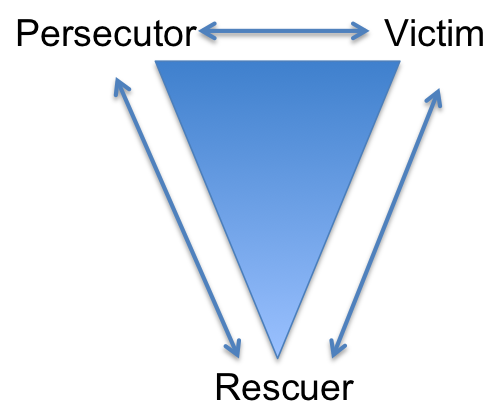Submitted by Sal Silvester on June 30, 2012

The Rescuer
"It's faster to do it myself than to delegate it to others..." or "If I want it done right, I'm the one who has to do it..." or "Let me do this for you..."
These are the words of the Rescuer - the person, or in this case the leader, who solves problems for others that they should solve for themselves.
The Victim
Submitted by Sal Silvester on June 26, 2012
We utilize the DiSC profile by Inscape publishing in several of our team building and leadership development programs here in Denver, Colorado. DiSC provides people with a framework for understanding their own style and how they differ from others. This framework helps team members and leaders elevate their effectiveness regardless of their role. Here are some applications in which we use DiSC.
Team building:
Submitted by Sal Silvester on June 18, 2012
No one likes to hurt someone else’s feelings, but that doesn’t justify providing feedback that’s so fluffy you never actually state the main point.
Don’t get me wrong — I’m not asking you to be ruthless. Use positives, but don’t smother the message with them. The challenge is to make sure the constructive part of your feedback is clear, or else there’s no sense giving feedback!
Submitted by Sal Silvester on June 15, 2012
One of the first mistakes new leaders make is to hold back on communication. Usually, this reluctance comes from fear, and it often breaks down into two (bad!) leadership styles:
Leaders who are concerned about losing control often overcompensate by micromanaging and being overly focused on tasks and results. They dole out stingy bits of information on a need-to-know basis, even though their people definitely need to know!
Submitted by Sal Silvester on June 1, 2012
 I want to thank you for helping make the debut of, Ignite! The 4 Essential Rules for Emerging Leaders a tremendous success.
I want to thank you for helping make the debut of, Ignite! The 4 Essential Rules for Emerging Leaders a tremendous success.
At its height yesterday, it ranked #189 out of over 8 million books on Amazon!
Submitted by Sal Silvester on April 21, 2012
In the first part of this article, published in our March newsletter, we talked about 4 challenges mid-level managers face. They are often viewed as "caught in the middle" between the senior leaders above them who impose strategy that they are required to implement, and the team members who work for them that look up for direction and support. The four common and costly challenges I outlined were:
Submitted by Sal Silvester on April 11, 2012
The performance management process in many organizations is irrelevant. Create 12-month/annual goals and then ignore the goals throughout the year.
How about a more agile process instead?
1. Create quarterly or more frequent goals that are aligned with organizational goals.
2. Make the review process more frequent - e.g., quarterly.
3. Update goals throughout the year so that they are in line with the latest organizational and market changes.
Submitted by Sal Silvester on April 9, 2012
Here's one thing every leader must know. People want to know that their contributions matter.
But recognition efforts often fail when the following happens:
Submitted by Sal Silvester on April 2, 2012
In the first of three posts about The Global Leadership Team, we talked about the importance of cultivating the team with agile leaders. Part 2 focused on creating the team's cultural building blocks. This post is focused on enhancing trust and respect among team members.
Building Trust and Respect Among Team Members
Submitted by Sal Silvester on March 28, 2012
In the first of three posts about The Global Leadership Team, we talked about the importance of cultivating the team with agile leaders. In this post we'll focus on the importance of creating the cultural building blocks.
Intentionally Creating the Team's Cultural Building Blocks
In our work with senior leadership teams, we typically start by helping the team put in place what we call the Cultural Building Blocks. These are the foundational components that enable a team to be successful - regardless of whether team members are co-located or global.
Pages